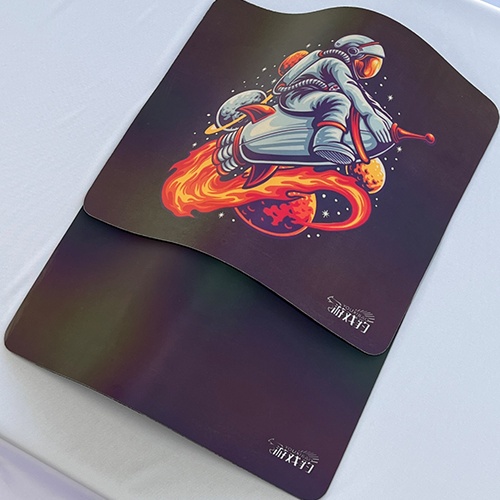Knowledge introduction of rubber mold design
Rubber mold design is an indispensable part in rubber product production, which is directly related to the accuracy, efficiency and service life of product molding. With the development of rubber industry, all kinds of rubber products with complex shapes and high precision are constantly emerging, which puts forward higher requirements for mold design. This paper will take you into the world of rubber mold design and introduce its basic knowledge, design principles and key points.Under people’s attention gaming mouse pad manufacturer Finally grow into what people need, born for the market and come for the demand. https://fldrubber.com
First, the basic concept of rubber mold
Rubber mold is a tool for molding rubber products, which usually consists of mold base, mold core, positioning device and gating system. The design of the mold should consider the fluidity, shrinkage and elasticity of rubber, as well as the structure and size of the product, so as to ensure that the product can be molded smoothly and meet the quality requirements.
Second, the preparation work before design
1. Understand the product requirements
Before designing the mold, we should first be familiar with the specifications, dimensions, shapes and performance requirements of the products to ensure that the mold design can meet the production requirements. This includes understanding the use of products, working environment and possible mechanical and chemical conditions.
2. Material selection
According to the purpose and performance requirements of the products, choose the appropriate rubber materials and auxiliary materials. Different rubber materials have different physical and chemical properties, such as hardness, wear resistance and corrosion resistance, which will affect the performance of products and the design of molds.
3. Equipment conditions
Understand the specifications and performance of production equipment to ensure that the mold design can match the production equipment. The size, structure and material selection of the mold need to consider the processing capacity and limitations of the production equipment.
Third, the mold structure design
1. Mold base design
Mold base is the basic part of the mold, which needs to have sufficient strength, rigidity and stability. The overall structure of the mold should be considered in the design to ensure that it will not be deformed or damaged during use.
2. Mold core design
Mold core is the core part of the mold, and its shape and size directly affect the molding effect of the product. The fluidity of rubber should be considered in the design to ensure the smooth demoulding of products and avoid defects. The precision and surface quality of mold core are also important factors affecting the quality of products.
3. Positioning device
The positioning device is used to ensure the accurate alignment of the mold during the clamping process. The common positioning methods are pin positioning and guide post and guide sleeve positioning. These devices can ensure that the mold can still maintain a stable alignment relationship under high pressure and high temperature environment, thus ensuring the accuracy and quality of products.
4. Pouring system
The gating system includes feed inlet, runner and gate, which is responsible for introducing rubber material into the mold cavity. The fluidity of rubber should be considered in the design to ensure that the material can fill the cavity evenly and avoid bubbles and material shortage. At the same time, the design of gating system also needs to consider the exhaust problem to ensure that the gas can be discharged smoothly during vulcanization.